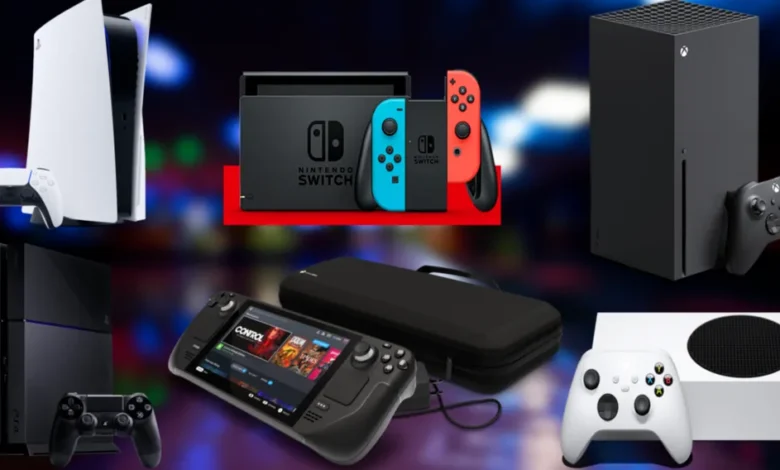Console to Cosmos: Exploring the Evolution of Online Gaming Platforms

The world of bk8 has undergone a remarkable transformation over the years, evolving from solitary console experiences to vast, interconnected virtual cosmoses. This evolution has been driven by advancements in technology, changes in consumer behavior, and the relentless innovation of game developers. In this article, we delve into the journey of online gaming platforms, tracing their evolution from humble beginnings to the expansive digital landscapes they have become today.
Contents
- 1 The Dawn of Consoles
- 2 Rise of PC Gaming
- 3 Emergence of Online Services
- 4 Birth of Massively Multiplayer Online Games (MMOs)
- 5 The Era of Xbox Live and PlayStation Network
- 6 Steam: The Digital Distribution Powerhouse
- 7 Rise of Free-to-Play and Microtransactions
- 8 Streaming Services and Cloud Gaming
- 9 Social Gaming and Esports
- 10 Virtual Reality (VR) and Augmented Reality (AR)
- 11 Cross-Platform Play and Progression
- 12 Community-driven Content Creation
- 13 Artificial Intelligence and Procedural Generation
- 14 The Future of Online Gaming
- 15 Conclusion: A Universe of Possibilities
The Dawn of Consoles
The roots of online gaming can be traced back to the early days of video game consoles. With limited processing power and connectivity options, gamers initially relied on local multiplayer experiences or, in some cases, rudimentary online connections via dial-up modems.
Rise of PC Gaming
While consoles dominated the gaming landscape in the 1980s and 1990s, the rise of personal computers introduced a new dimension to online gaming. PC gamers were early adopters of networked gameplay, utilizing dial-up bulletin board systems (BBS) and early internet services to connect with fellow players.
Emergence of Online Services
The late 1990s saw the emergence of dedicated online gaming services, such as Blizzard’s Battle.net and Microsoft’s Zone.com. These platforms provided centralized hubs for multiplayer gaming, offering matchmaking, leaderboards, and chat functionality.
Birth of Massively Multiplayer Online Games (MMOs)
The late 1990s and early 2000s witnessed the rise of massively multiplayer online games (MMOs) like Ultima Online and EverQuest. These groundbreaking titles introduced players to persistent virtual worlds populated by thousands of simultaneous users.
The Era of Xbox Live and PlayStation Network
The mid-2000s marked a significant milestone with the launch of Xbox Live and PlayStation Network. These integrated online platforms revolutionized console gaming, introducing features like online multiplayer, digital distribution, and social networking.
Steam: The Digital Distribution Powerhouse
Valve’s Steam platform, launched in 2003, transformed the way PC games were distributed and played. Steam popularized digital distribution, offering a vast library of games, automatic updates, and community features.
Rise of Free-to-Play and Microtransactions
The proliferation of free-to-play games and microtransactions in the late 2000s and early 2010s disrupted traditional สูตรบาคาร่า ai อัจฉริยะ business models. Titles like League of Legends and Fortnite demonstrated the viability of monetizing games through in-game purchases rather than upfront costs.
Streaming Services and Cloud Gaming
Recent years have witnessed the emergence of game streaming services and cloud gaming platforms like Google Stadia and NVIDIA GeForce Now. These services leverage cloud infrastructure to deliver high-quality gaming experiences to a wide range of devices, reducing the need for powerful hardware.
Social Gaming and Esports
The rise of social media and streaming platforms has fueled the growth of social gaming and esports. Titles like Among Us and Valorant have gained massive followings, with players and spectators alike engaging in competitive gameplay and community events.
Virtual Reality (VR) and Augmented Reality (AR)
Virtual reality (VR) and augmented reality (AR) technologies are reshaping the gaming landscape, offering immersive experiences that blur the line between the virtual and the real. VR headsets like the Oculus Rift and AR games like Pokémon Go are pushing the boundaries of interactive entertainment.
Cross-Platform Play and Progression
Cross-platform play and progression have become increasingly prevalent, allowing players to connect with friends across different devices and carry their progress seamlessly from one platform to another. This trend promotes inclusivity and breaks down barriers between gaming communities.
Community-driven Content Creation
The rise of user-generated content platforms like Roblox and Minecraft has empowered players to become creators, shaping their own virtual worlds and experiences. These platforms foster creativity and collaboration, enabling players to share their creations with a global audience.
Artificial Intelligence and Procedural Generation
Advancements in artificial intelligence (AI) and procedural generation techniques are enabling developers to create more immersive and dynamic gaming experiences. AI-driven NPCs and procedurally generated worlds provide endless possibilities for exploration and discovery.
The Future of Online Gaming
Looking ahead, the future of online gaming promises even greater innovation and evolution. Technologies like 5G connectivity, blockchain, and virtual reality are poised to reshape the gaming landscape, offering new ways to play, connect, and experience digital worlds.
Conclusion: A Universe of Possibilities
From the humble beginnings of console gaming to the vast cosmos of interconnected virtual worlds, the evolution of online gaming platforms has been nothing short of extraordinary. As technology continues to advance and consumer expectations evolve, the possibilities for the future of gaming are limitless. Whether exploring distant galaxies, competing in global esports tournaments, or building virtual empires with friends, one thing is certain: the journey is just beginning.




